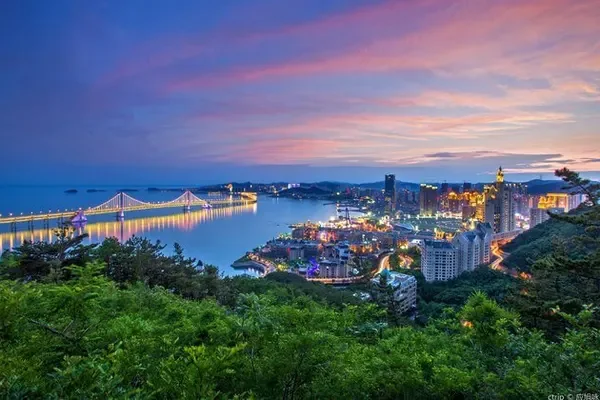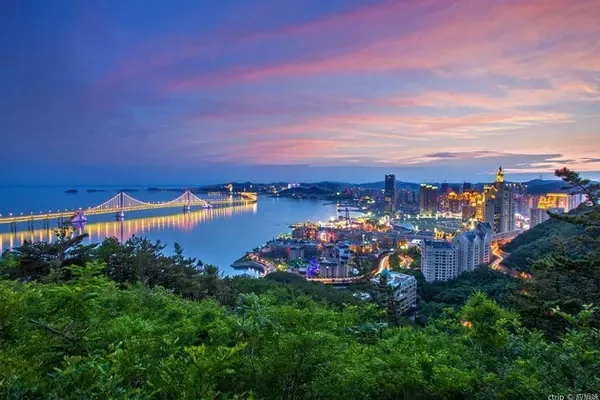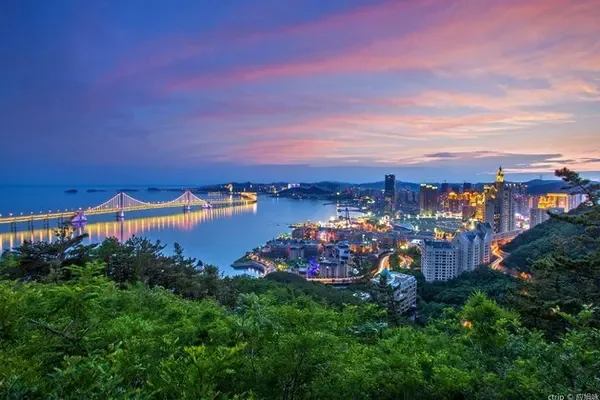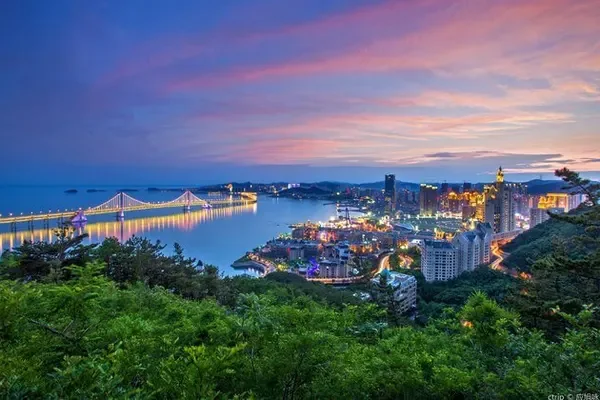"Self-driving in Ningxia, Shaanxi, Shanxi--Searching for the disappearing ethnic Xixia Quest" is a series of activities that the reporter participated in during the 2007 National Day Golden Week. Starting from Beijing, the convoy traveled through Hebei, Inner Mongolia, Ningxia, Shaanxi, and Shanxi, with a total journey of about 3,000 kilometers. As a reporter accompanying the team, he recorded the wonderful moments of the whole itinerary. The first stop of the itinerary was to enjoy the beautiful scenery of the desert oasis and sand lake and explore the rock paintings of Helan Mountain after arriving in Ningxia Hui Autonomous Region.

In the early morning of October 1, 2007, car enthusiasts drove their beloved cars from all directions in the capital to the Baige Service Area of Badaling Expressway to gather. The convoy set off at around 6:30, and arrived in Yinchuan, the capital of Ningxia Hui Autonomous Region, at around 11:00 that night, with a total journey of more than 1,200 kilometers.

On the afternoon of October 2, the National Day self-driving tour team organized by the China (Beijing) Aiche Sunshine Culture Club, "Self-driving Ningxia, Shaanxi, Shanxi--Searching for the Lost Nation Xixia Exploration Tour", ended the Xixia Royal Tomb and Xiguan Mosque. After the tour, go to Yinchuan, a famous eco-tourism scenic spot known as a desert oasis - Shahu for sightseeing.

Shahu Ecotourism Area is located in Pingluo County, Yinchuan City, 46 kilometers north of Yinchuan City, the capital of Ningxia Hui Autonomous Region. In 1996, Shahu Ecotourism Area was rated as one of the top 35 tourist attractions in the country. The National Day self-driving caravan set off from Yinchuan City and re-entered the Ningqing Expressway and headed north.

After about 40 minutes of driving, we successfully arrived at the Shahu Ecotourism Area. This is also the second time for the reporter to come here for sightseeing. I remember that when the reporter came to Shahu for the first time on July 31, 2004, three years ago, the unique landscape here left a deep impression on people.

Especially at that time, the reporter took a seaplane and took many pictures of the Shahu eco-tourism area. Although it was the summer vacation in August at that time, there was still a strong wind blowing against my face when I was filming in the air, and the wind blew the hand holding the camera to the ground. This ten-minute aerial photography experience is still fresh in my memory.

Sand Lake is Nansha North Lake, where sand and water are connected, and reeds and birds depend on each other, forming a picturesque and fascinating picture scroll. To the south of the Shahu tourist area is a desert with an area of about 45 square kilometers, while to the north is a water area with an area of about 23 square kilometers. The magic of the sand lake is reflected in the ingenious combination of sand and water. The south of my country has more water but less sand, and the north has more sand but less water. But here the lake is surrounded by golden sand, sand and water are connected, and the north and south are united.

According to the records, Shahu Lake was originally a wetland. Due to the Helan Mountain not far away, when there is heavy rain every summer, there will be mountain torrents. After years of accumulation, such a natural lake has been formed. At the beginning of the formation of the lake, people here used it to raise fish and increase their income. In order to ensure the water source, they drew water from the Yellow River as a supplementary water source.

The lake here is clear, the fish and shrimp are delicious, without any pollution, it is a real green food. In particular, the big fish heads from Shahu entered Zhongnanhai and became a delicacy for state banquets. The water surface of Shahu Lake is about 1333.3 hectares, and there are large wetlands in its southeast. Added up, the total area is not less than 3333.3 hectares, which is far larger than the West Lake in Hangzhou, Zhejiang.

The scenery of the Shahu Ecotourism Area is mainly composed of five major scenic spots: sand, water, reeds, birds and mountains, which respectively constitute the four major scenic spots of "Hundred Birds Paradise", "Ten Thousand Mu Lotus Pond", "Nile River Style" and "Desert Silk Road". Among them, the Bird Paradise has 198 species of 11 orders, 24 families, and millions of birds. The rich bird resources make it a national natural scenic reserve; Bi, reflecting the magnificent scene of the lotus in a different kind of red".

The Nile River Style Area reproduces the exotic customs such as the pyramids on the banks of the Nile River and the Sphinx on the shore of the sand lake through sand sculpture art; the Desert Silk Road reproduces the wonders of the desert on the Silk Road in the sand lake scenic area So that tourists can enjoy the charm of silk within a square inch.

Shahu Eco-tourism Area is not only a tourist area with beautiful scenery, but also an entertainment place with complete entertainment facilities and entertainment items. Combining with the natural characteristics of Shahu Lake, the scenic spots that have been developed and constructed include amusement parks, watchtowers, and lotus gardens. , Reed Maze, Lake Bird’s Nest, Western Desert, Xixia Palace, Seaplane, Water Skydiving, Jet Ski, Speeding Surfing, Sand Skiing Cableway, Desert Sand Sculpture, Lake Boating, Natural Baths and many other tourism projects.

To travel to Shahu Lake, you must first take a sightseeing boat. So the riders came to the Shahu Dachuan Wharf and set off for the scenic spot by boat. Driving away from the Shahu Wharf, the mushroom-shaped reeds come into people's eyes. It is said that the sand lake is beautiful, and the beauty lies in its unique reeds swaying in the wind.

On this vast lake, more than 286.7 hectares of reeds are distributed. The reeds fluttering in the wind, like a graceful girl, welcome the arrival of tourists from all over the world. Some people say that the sand lake is better than the West Lake because it has such a beautiful The reason for the reeds. It is these dotted and dense green landscapes that decorate the sandy lake colorfully. At the same time, the reeds are also responsible for purifying the water quality.

Shahu Lake is vast, vast and clear, with the character and charm of everyone. The green lake water is clear and pure, flowing melodiously and directly into people's hearts. The water quality of Shahu Lake is excellent and there is little pollution. Standing on the sand dunes on the shore of the lake and looking at the sand lake, the turquoise lake water is like a piece of emerald slipping into the golden sand plate, crystal clear.

The formation of sand lake water is inseparable from the Yellow River. "The Yellow River in the world is rich in Ningxia". The water of the Yellow River flowing through the Ningxia Plain irrigates a large area of farmland here and nourishes thousands of miles of fertile fields, making Ningxia a rich land. It has gained the reputation of "the south of the Yangtze River on the top of the plug", and also created Shahu, the "pearl on the top of the plug".

After more than 20 minutes of sailing, the large cruise ship sent tourists to the Shahu Scenic Area. After disembarking, they climbed up from the lakeside to the Sand Mountain in front of them, which is known as the Great Desert Silk Road Wonder Scenic Spot. Standing on the top of the mountain, people will feel the Nansha Beautiful views of North Lake. It's a pity that it was raining continuously that day, so some entertainment items could not be opened normally like sunny days.

However, some projects such as sand boarding, desert surfing, flying bungee jumping, and car surfing still aroused great interest from riders. Reporters and riders participated in the desert surfing of off-road vehicles. But who ever wanted to participate in a project, but saw the problem of how to better manage the pricing of some tourism projects in Shahu Scenic Area?

The original "preferential package" plan of 260 yuan for a car to take two routes, in fact, it only takes about ten minutes from boarding to getting off. Although the short ten-minute off-road vehicle desert surfing is indeed very exciting. But when people's interest has just entered a climax, it stopped abruptly, which no one expected. The exchange of 260 yuan is only ten minutes of consumption. There is really a feeling of being "deceived". As the saying goes, this is too fake... It seems that the tourist fees here were not too high at that time. specification.

I remember when I visited the Shahu Sand Sculpture Garden three years ago, there were quite a few very good works at that time. Like Qin Shihuang of China and several famous presidents in American history. The second time I saw the works in the Sand Sculpture Garden seemed to be a bit average, but there were also some better works like "The Fisherman and the Goldfish". It is said that the sand sculptures here are updated every year. I really hope that some good works can emerge every year in the Sand Lake Sand Sculpture Garden.

Someone once praised Shahu in this way: half is desolate and vast yellow sand, and half is misty lake water, just like a rough and powerful Northwest man embracing a gentle and beautiful Jiangnan girl.

Here, the sand and the lake seem to be a pair of lovers made in heaven, cuddling each other and lingering. The blue waves of the lake are rippling, the golden waves of the sand sea are undulating, the clear water is surrounded by yellow sand, and the yellow sand is guarding the clear water. This kind of shocking beauty can't help but make people sigh how magical and incredible the creation of nature is. The sand lake tour really left people with too many beautiful feelings and memories...

On October 3, the "Self-driving Ningxia, Shaanxi, and Shanxi--Searching for the Lost Nation Xixia Exploration Tour" National Day self-driving tour team continued its schedule and went to Helan Mountain to explore the rock paintings. Due to the night of October 2, it rained all night in Yinchuan City. Although the rain was much lighter the next morning, it was still sparse and non-stop. When the convoy drove out of Yinchuan City and arrived at the foot of Helan Mountain, the sky was suddenly covered with thick fog, and the visibility was only about 20 to 30 meters.

The way to Helan Mountain Rock Painting Scenic Area is along a straight road at the foot of Helan Mountain. Both sides of the highway are very similar to the landscape along the way from Urumqi to Kashgar in southern Xinjiang, basically the endless Gobi Desert. On the side of Helan Mountain, after the Gobi extends to the foot of the mountain, there are rolling mountains.

According to historical data, Helan Mountain means "wild horse" in the Mongolian language. Located at the junction of Alxa League and Ningxia in Inner Mongolia, it is a mountain range running from northeast to southwest. The main peak, Aobao Gelong, is located in the northwest of Yinchuan, with an altitude of 3,556 meters. It is the highest peak in Ningxia.

Helan Mountain is about 250 kilometers long from north to south, 20 to 40 kilometers wide from east to west, and 2000 to 2500 meters above sea level. The northern and central mountains are higher in altitude, and the canyons distributed here are also deep and steep. In the northern part of the Yinchuan Plain in the Ningxia Hui Autonomous Region, there are steep mountains and deep valleys on the eastern slope of the Helan Mountains. The southern part of the mountain range is relatively flat and gradually submerged by the Loess Plateau.

Helan Mountain is quite rich in forest resources. Here grow trees, fruit trees and shrubs such as Chinese pine, aspen, spruce, mountain peach, mountain apricot, sorrel, and clove. There are also mineral resources such as coal, manganese, and iron under the mountain body of Helan Mountain. Its native product "Helan Stone" is a precious raw material for making stone art.

The self-driving tour team has been moving along the east-west traffic artery of Helan Mountain since ancient times. As the fog dissipated, after about half an hour's drive, the team arrived at the Helan Mountain Rock Painting Scenic Area. The riders took a group photo at the entrance of the scenic spot and then entered the scenic spot to enjoy the paintings. The reporter saw that there are still some foreign friends visiting the scenic spot. It seems that exploring the mysteries of the rock paintings of Mount Helan in China also attracted them.

Helan Mountain petroglyphs are mainly distributed at the eastern foot of Helan Mountain in Yinchuan City. Since a large number of Helan Mountain petroglyphs were discovered and released to the world in the 1980s, they have aroused strong repercussions at home and abroad. In 1991 and 2000, the two annual conferences held in Asia by the International Rock Art Commission affiliated to UNESCO were both held in Yinchuan. In 1996, the rock paintings of Helan Mountain were announced by the State Council as a national key cultural relic protection unit. In 1997, the International Rock Painting Committee included the rock paintings of Helan Mountain in the unofficial World Heritage List. Helan Mountain rock paintings are pictures drawn on rocks by ancient ancestors using realistic or abstract artistic techniques over the long years. Most of them are made by chiseling and grinding methods. The lines are simple, delicate and simple. It records the ancient human society. all aspects of life. It is a precious material for studying the history and art of ethnic minorities in the ancient Helan Mountain area. China is one of the countries with the widest distribution and richest content of petroglyphs in the world, which were discovered as early as 1500 years ago. Helan Mountain is one of the most concentrated rock paintings in my country.

Walking into the Helan Mountain Rock Painting Scenic Area, there is a long valley. The small stream in the valley is gurgling. The distribution of Helan Mountain petroglyphs has obvious landform features, and they are mostly distributed on the stone walls on both sides of the valley of more than 600 meters. There are more than 300 pieces, most of which are human head portraits, as well as images of horses, donkeys, cattle, sheep, hunting, and human hands. Rough, simple, and with a wide range of themes, it fully reflects the totem worship of ancient nations. In addition, there are many inscriptions in Xixia script on the rock wall.

Although riders looked at the petroglyphs on the rock walls and listened to the narrator's explanation, they still felt very mysterious and incredible about the various patterns carved on the rocks. After walking along the ravine for a while, we came to the famous Helios petroglyphs in the middle of the mountain. In order to attract tourists' attention, the scenic spot also inserted a small iconic red flag above the painting. At the foot of the mountain, tourists can see the rock painting of the sun god from a distance, but if they want to see it up close, they have to climb up the mountain along the steep mountain road to appreciate it clearly.

According to the records, the rock paintings of Helan Mountain are rough and vigorous in artistic shape, simple in composition, natural in posture and strong in realism. Portraits of people accounted for more than half of the total.

The portraits of human heads are simple and strange; some have horns; some have feathers; some wear pointed or round caps. The petroglyphs depicting women, some wearing headdresses, and some wearing hair buns, are elegant and elegant, reproducing the ancient women's pursuit of beauty thousands of years ago. Some have big ears, high noses and hairy faces, some have bones in their mouths, and some have striped or curved lines on their faces. There are also several facial features resembling a standing human figure with bent arms, legs spread apart, and a long knife at the waist, showing the image of a totem witch.

The composition of animal graphics is rough, vivid and lifelike. There are running deer, blue sheep with protruding horns, galloping horses, dogs wagging their tails, figures of flying birds and beasts, pictures of some human hands and the sun, and scenes of primitive religious activities .

According to the analysis of rock painting graphics and Xixia inscriptions, Helankou rock paintings were engraved in different periods, most of which were made by northern nomads in the Spring and Autumn and Warring States periods, and there are also portraits of other dynasties and Xixia periods. There are two engraving methods: chiseling and grinding: the chiseling trace is clear and shallow; the grinding method is to chisel first and then grind, with thicker and deeper lines and smooth grooves.

The themes, content and expression techniques of Helankou rock paintings are very extensive and full of imagination, giving people a feeling of truth, kindness, solemnity and innocence. Numerous rock paintings provide extremely precious cultural relics for people to understand and study the history, culture, economic conditions, customs and customs of ancient nomadic peoples, and can be called a precious national art gallery.

After the convoy left the Helan Mountain Rock Painting Scenic Area, it returned along the original road and came to Baisikou Scenic Area at the foot of Helan Mountain. This is a scenic spot at the foot of the mountain. On the highway, overlooking the towering and majestic twin towers at Baisikou is very spectacular.

The Baisikou Twin Pagodas at the foot of Helan Mountain are the only brick pagodas with dense eaves in Ningxia, and are included in the third batch of national key cultural relics protection units announced by the State Council. The two towers face each other with a distance of about 80 meters. The east tower is 39 meters high and has 13 floors; the west tower has 14 floors. Its height and shape are similar to those of the east tower, both of which are octagonal brick towers with dense eaves.

It used to be the Buddhist Temple of Xixia Kingdom at that time, where Sakyamuni and Duobao Tathagata were enshrined. The brake seats on the top of the pagoda are composed of rows of painted ponchos, and there is a statue of a strongman at each corner, with his belly raised and his head raised, lifelike. According to the Western Xia characters found in the Buddhist niches inside the tower and the Song Dynasty coins collected around it, it can be inferred that the twin towers were first built in the Western Xia Dynasty. (Text photo: Feng Ganyong)



